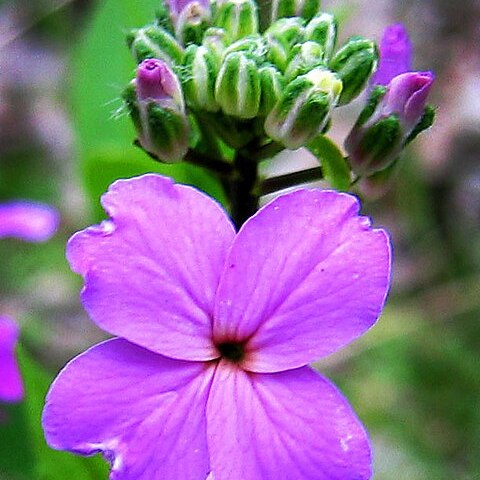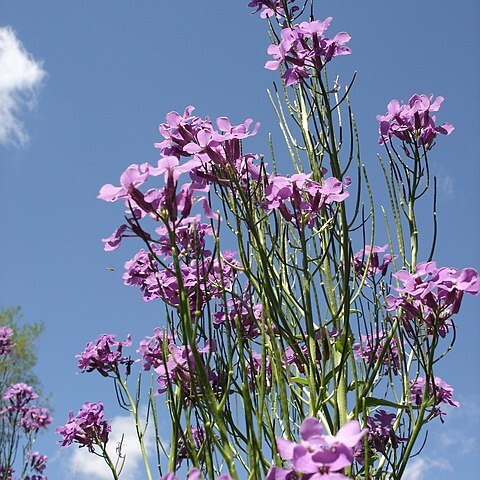Plants with caudex; not scapose; pubescent or glabrous, trichomes simple and/or forked, often mixed with unicellular glands on uniseriate stalks. Stems erect, unbranched or branched. Leaves basal and cauline; petiolate [sessile]; basal rosulate [not rosulate], blade margins entire, dentate, or pinnatifid; cauline similar to basal. Racemes (corymbose), considerably elongated in fruit. Fruiting pedicels divaricate or ascending [reflexed], slender or stout. Flowers: sepals oblong [linear], (sometimes connivent), lateral pair strongly saccate basally, (pubescent or glabrous); petals obovate [oblong], (much longer than sepals), claw distinctly differentiated from blade, (apex rounded [obtuse]); stamens strongly tetradynamous; filaments (erect), slender or dilated basally; anthers linear [oblong], (apex obtuse); nectar glands (2), lateral, annular or lunar. Fruits tardily dehiscent, sessile, linear, torulose; valves each with prominent midvein, glabrous; replum rounded; septum complete; ovules 4-40 per ovary; style obsolete or distinct (relatively short); stigma conical (lobes prominent, connivent or distinct, decurrent). Seeds plump, not winged, oblong; seed coat (reticulate), not mucilaginous when wetted; cotyledons incumbent.
Sep erect, the outer narrow, crested to near the summit, the inner broad, saccate at base; pet purple to white, the blade obovate, the claw surpassing the cal; short stamens subtended by a U-shaped gland; long stamens glandless; anthers linear-oblong; ovary cylindric; style scarcely narrower; stigma 2-lobed, decurrent along the style; ovules numerous; frs widely spreading on stout pedicels, linear, terete or nearly so, scarcely dehiscent; stigma persistent; valves indistinctly 1-nerved; seeds large (3–4 mm), angularly fusiform, in one row; tall biennial or perennial herbs with showy fls; pubescence of both simple and branched hairs. 25, Eurasia.
Biennial to perennial taprooted herbs. Hairs simple, branched and/or glandular. Stems erect, leafy. Lvs simple, toothed or pinnatifid. Racemes ebracteate, sometimes bracteate below. Sepals erect, the inner saccate. Petals yellow, purple, pink or white. Stamens 6; filaments of inner 4 slightly winged. Lateral nectaries 4, ± joined inside bases of lateral stamens; median nectaries 0. Style short; stigma deeply 2-lobed, with lobes erect, not appendaged at back. Silique linear-cylindric or somewhat 4-angled, dehiscent; valves with distinct median and lateral veins; beak 0. Seeds oblong, not winged, in 1 row per locule.


